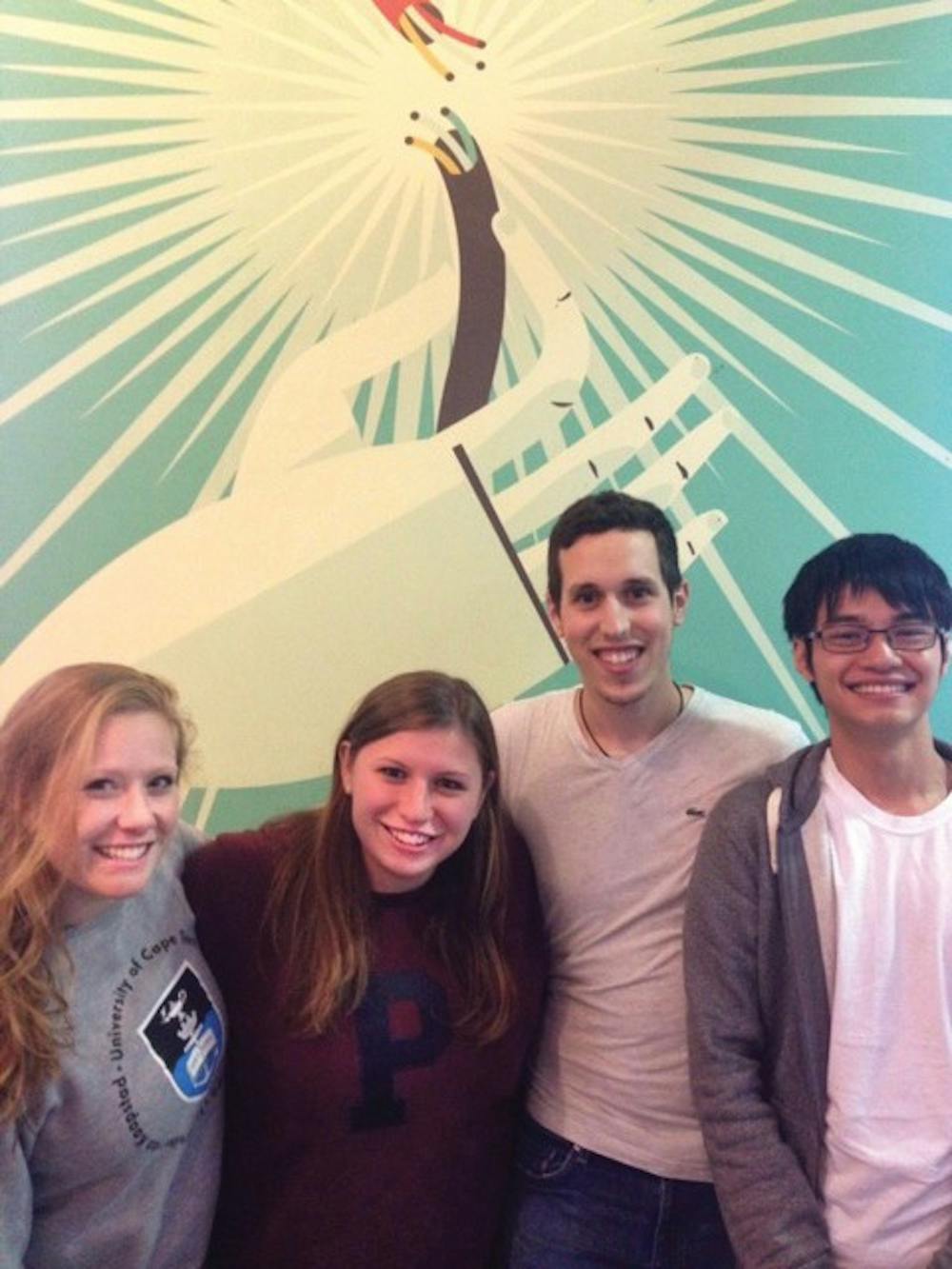
Engineering seniors Julia Sigal, Valerie Cohen, Sam Ettinger and Jonathan Tieu designed a revolutionary bicycle helmet for their senior project.
Credit: Courtesy of Julia SigalFour seniors are 3-D printing life-changing technology right in the Engineering Quad.
As their senior design project, Engineering seniors Julia Sigal, Valerie Cohen, Jonathan Tieu and Sam Ettinger are creating a revolutionary bicycle helmet. The new helmet will include secure protection from concussions and automatic turn signals, and a brake light on the back of the helmet.
The helmet is being tested via a MTS machine, which simulates the force of collisions. The group is using the 3-D printers in the Engineering School to test different infills in order to find the proper protection from a concussion.
Sigal said that standard bicycle helmets don’t provide enough protection. “They don’t help you not get an injury,” she said. “They just help you not die.”
The year-long project hopes to change cycling accident prevention and protection.
Developed with the help of independent helmet manufacturer John Larkin , the group anticipates the helmet's protection to be strong enough to help riders avoid concussions. “We decided we wanted to make a helmet that would get you under a 100 g's, which is what determines if you have concussion,” Sigal said. “In a situation in which a helmet would protect you from dying, we want it to protect you from getting a concussion.”
The prevention is provided by the back of the helmet. Turn signal lights and a brake light will be activated depending on the movement of the cycler’s head.
Cohen and Sigal said that helmets’ importance is often neglected. “[There are] twice as many brain related traumas of biking than there are of football,” Cohen said. “It’s a little underplayed.”
They said that although a lot of people do not wear helmets, this is not their issue to tackle. “Our purpose was just to find a way to decrease the number of brain related injuries in cycling every year by introducing a helmet that prevented concussions,” Cohen said.
Sigal learned the importance of helmets through her family’s history with cycling. “My dad was in an accident when I was in the fifth grade, and he cracked his helmet,” Sigal said. “A helmet is important because while it might not protect you from getting a concussion or a life threatening brain injury, it is the difference between living and dying.”
Project advisor Graham Wabiszewski said this project is revolutionary. “Despite the fact that helmet use is increasing and people in general are being safer on the roads, there are a significant amounts of concussions and injuries occurring,” Wabiszewski said.
In addition to being relevant in cycling, Wabiszewski said this project is important because it is utilizing 3-D printing. “The team has taken advantage of their access of a 3-D printer, and I think it’s unique,” he said. “I can envision a day when 3-D printers are as common as regular 2-D printers.”
The team believes their new helmet could change the cycling community. “If this works,” Sigal said, “it could be something that could change the industry.”
The Daily Pennsylvanian is an independent, student-run newspaper. Please consider making a donation to support the coverage that shapes the University. Your generosity ensures a future of strong journalism at Penn.
DonatePlease note All comments are eligible for publication in The Daily Pennsylvanian.







